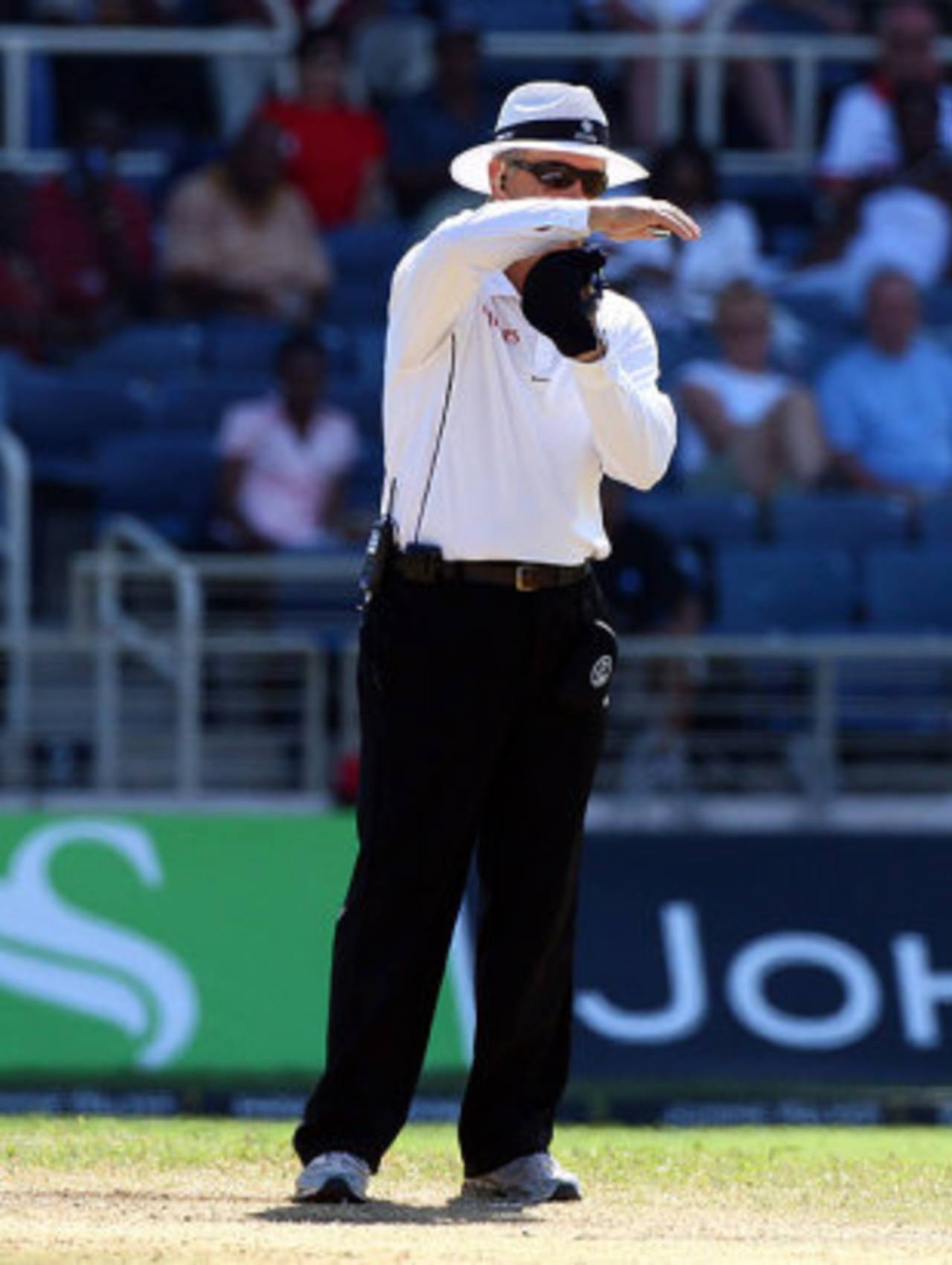Research is key to UDRS, says ball-tracking producer
MS Dhoni's doubts about the UDRS could be eased were he to take up an offer by the head of the Virtual Eye ball-tracker to understand the technology
Sharda Ugra
03-Nov-2010

If the UDRS technology was explained to India, Ian Taylor, CEO of Virtual Eye, believes they would come to accept it • Getty Images
MS Dhoni's doubts about the Umpire Decision Referral System (UDRS) could be eased were he to take up an offer by the head of the Virtual Eye ball-tracker, and understand the technology now in use in international cricket.
One of three mandatory requirements for the UDRS, the ball-tracker is the most contentious component, and Ian Taylor, CEO of Virtual Eye - in use for the current Australian season - told ESPNcricinfo last week that he wanted the technology shared with people it would affect. "We need to spend time with umpires and players, captains of teams, so that we can open up the entire Pandora's box of the technology," Taylor said. "I think people are right to question the technology, that is how we make it better."
Hawk-Eye and Virtual Eye, cricket's two main ball-tracker cameras, use slightly different technology. Hawk-Eye uses vector graphics for projectile mapping like the kind used in missile technology. Paul Hawkins, managing director of Hawk-Eye Innovations, has also extended an offer to the Indian team to explain the technology. "I think it is mainly whether the Indian team has confidence in the technology," he told ESPNcricinfo. "If the Indian players take some time to understand the system fully ... those concerns would go away."
Virtual Eye, which was experimented with for the first time during India's tour of Sri Lanka in 2008, uses fibre-optic cable leading to cameras producing higher frame rates per second. "This, they tell us, will add to the accuracy of the ball-tracking," said Brad McNamara, executive producer of cricket at Channel 9, which will be using Virtual Eye for the first time in the upcoming Ashes.
During the Ashes, Taylor said, four cameras would track balls at 160 frames a second, providing points of reference available to the third umpire to make a decision. When Virtual Eye ventured into ball-tracking cricket in 2006, the cameras they used operated at 110 frames a second, which at the time were suitable for television. The advent of the DRS and the use of the "predictive path", Taylor said, meant that, "we have had to find way to up the game."
The DRS has suddenly increased the heat on the game's graphics providers. "It was fine when we were just delivering for television, but the advent of the DRS and the use of the predictive path has meant we have had to find ways to up the game," Taylor said. "The computer must now work out, like the umpire, where the ball would have gone had it not hit the pad. The more frames, or points of reference we can give it to do that - the better the prediction."
It takes 40 centimetres of camera track (15 inches or less than half a yard on a cricket pitch), at 100 frames a second to give the computer two points of reference. "The computer is making its best estimate as to where the ball will go after bouncing depending on the information it receives via the frames per second," Taylor said. Increasing the frames per second thus increases the number of points available and while cameras that can work at 1000 frames a second are available, they are extremely expensive. "We are looking for a cost effective way of lifting the frame rate. That's where the R&D has to go now."
Taylor shares players concerns, saying, "We may have a little more knowledge from a technical perspective but that is totally balanced out by the players', and umpires', practical knowledge of what happens out there on the pitch in real life."
Sharda Ugra is senior editor at Cricinfo